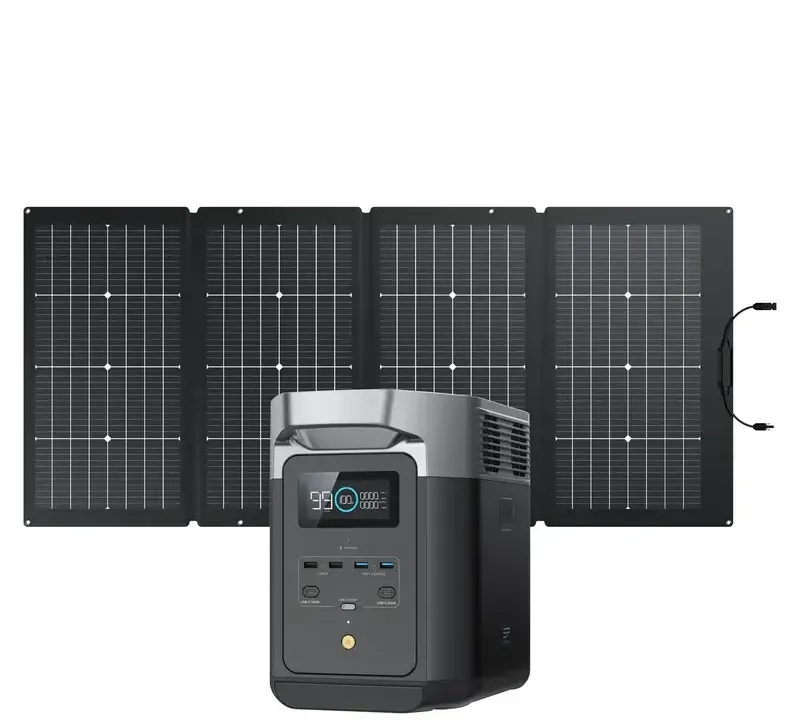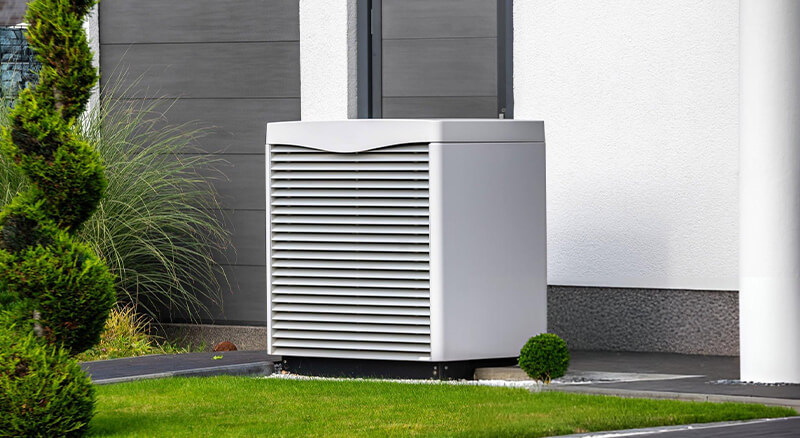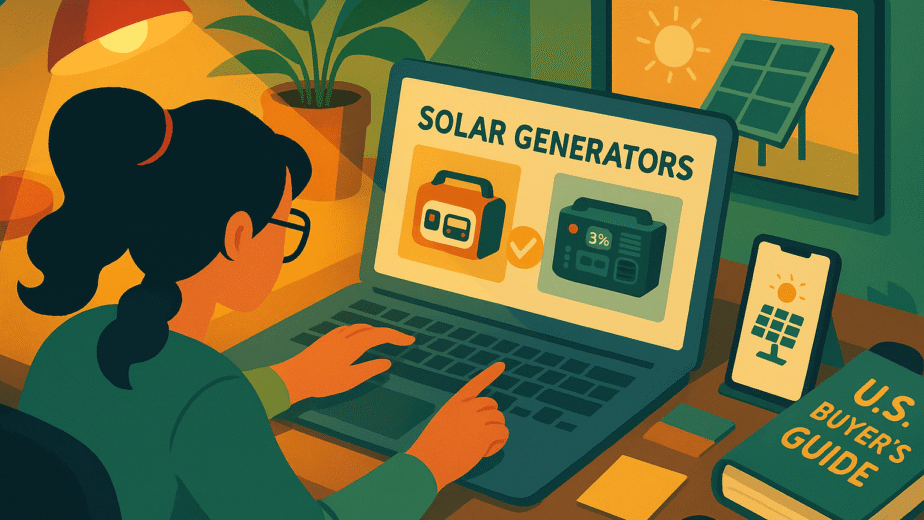Imagine a summer storm knocks out power across your neighborhood. The fridge starts warming, phones die, lights flicker off, and your family is left in silence. If you’ve ever wondered whether a solar generator could give you peace of mind, you’re not alone.
More U.S. households are turning to home energy storage and solar backup solutions. The residential solar generator market is expected to swell by over 10% annually in the coming decade. But not all systems are created equal, and for families, reliability, capacity, and speed matter more than cool specs on paper.
In this post, we’ll put EcoFlow Delta and Jackery Explorer head to head. We’ll dig into real performance, how they handle actual household loads, what the tradeoffs are, and which option fits different family scenarios. By the end, you’ll see which generator makes more sense for your home, not just the hype.
Why Families Are Switching to Solar Generators (And What to Look For)
When the power goes out, most families aren’t thinking about laptops or phone chargers. They’re worried about the fridge, the baby monitor, the Wi-Fi router, or even medical devices.
That’s why solar generators have become one of the most searched home backup solutions in recent years. Families want something quiet, safe, and easy to use. No gas. No fumes. No pulling cords at 3 a.m.
But not every solar generator is built for real family life.
So what should you actually look for?
- Battery capacity tells you how long it’ll last. Think in hours, not just watt-hours.
- Power output determines if it can run everything at once.
- Charging speed really matters in back-to-back outages.
- Port variety lets you plug in multiple devices without juggling.
- Battery type matters for safety and longevity. LFP (LiFePO₄) is the gold standard now.
- Portability depends on your space and strength. Some units are deceptively heavy.
- Support and warranty make a difference when things go wrong.
The best solar generator for families is simple, reliable, and strong enough to carry you through the worst without stress.
EcoFlow Delta Series — Is It Worth the Hype?

EcoFlow gets a lot of love online. But what does it actually offer for families?
Quick Overview of the Delta Lineup
- Delta (original): 1260Wh
- Delta 2: 1024Wh, expandable to 2048Wh
- Delta Max: starts at 2016Wh, expandable
- Delta Pro: 3600Wh, expandable to over 20kWh
Each step up gives you more battery, more power, and more future-proofing.
Why Families Love It
EcoFlow chargers insanely fast. Some models go from 0 to 80% in under an hour using a wall outlet.
Even the base Delta can run essentials like a fridge, router, lights, and phone chargers at the same time.
It’s expandable. Add batteries later without replacing the entire system.
And it’s smart. The app lets you monitor usage, track charge levels, and control ports from your phone.
What’s Not So Great
These units are heavy. Even the base Delta isn’t light, and the Delta Pro is nearly 100 pounds.
They’re also pricier than similar-capacity units from Jackery or other brands.
Older models use NCM batteries, which don’t last as long as newer LFP versions.
Bottom line: EcoFlow units are fast, powerful, and tech-forward. For families who want performance and flexibility, it’s a strong choice.
Jackery Explorer Series — Still the Trusted Option?

Jackery isn’t flashy. But it’s been the go-to brand for families who want something easy, proven, and dependable.
Meet the Jackery Explorer Lineup
- Explorer 1000: 1002Wh
- Explorer 1500: 1534Wh
- Explorer 2000 Plus: 2042Wh
- Explorer 3000 Pro: 3024Wh
Jackery also offers solar generator bundles with their SolarSaga panels.
What Families Appreciate
It just works. No apps, no setup headaches. Plug it in and go.
Most Jackery units are lighter and easier to carry than EcoFlow counterparts.
Newer models like the 2000 Plus use LFP batteries for a longer lifespan.
And Jackery has a solid track record with U.S. support and warranty service.
Where Jackery Falls Short
Recharge times are slower. Some units take 6–7 hours to recharge via AC.
Older models aren’t expandable. What you buy is what you’re stuck with.
And there are no smart features. That might be a pro or con depending on your preference.
Bottom line: Jackery is for families who want peace of mind without the bells and whistles. It’s simple, light, and proven.
Side-by-Side Comparison: EcoFlow Delta vs. Jackery Explorer
| Feature | EcoFlow Delta Series | Jackery Explorer Series | Who wins |
| Battery Capacity | 1260Wh to 3600Wh+ | 1002Wh to 3024Wh+ | Tie |
| Power Output | Up to 3600W (7200W surge) | Up to 3000W (6000W surge) | EcoFlow |
| Recharge Speed | 0–80% in under 1 hour | 6–7 hours (typical) | EcoFlow |
| Battery Chemistry | NCM (old), LFP (new) | Mostly LFP on newer models | Tie |
| Port Selection | More AC and USB-C | Fewer ports on older models | EcoFlow |
| Solar Input | Up to 1600W | Up to 1200W | EcoFlow |
| Portability | Heavier overall | More compact in most models | Jackery |
| Expandability | Strong modular support | Only newer models support it | EcoFlow |
| Smart Features | Full app control | No smart features | EcoFlow |
| Price/Value | Premium pricing | More affordable in smaller sizes | Jackery |
Which One Should You Buy? Best Picks for Families
For small families or short outages:
Jackery Explorer 1000 or EcoFlow Delta
Both are easy to use and enough to get you through a few hours of downtime.
For mid-size homes with occasional outages:
EcoFlow Delta Max or Jackery 2000 Plus
Big enough to run the fridge, lights, Wi-Fi, and more overnight.
For large families or serious power needs:
EcoFlow Delta Pro or Jackery Explorer 3000 Pro
These can handle appliances, heavy loads, or even light off-grid setups.
For dual-purpose (camping + backup):
Jackery Explorer 1500 or EcoFlow Delta 2
Portable enough for trips but strong enough to support your essentials at home.
Cost Breakdown: Solar Generators vs. Gas Generators
Upfront Cost:
EcoFlow Delta 2: ~$999
EcoFlow Delta Pro: ~$3,700
Jackery 1000: ~$999
Jackery 3000 Pro: ~$2,800
Cost per watt-hour:
EcoFlow Delta 2: ~$0.98/Wh
Jackery 2000 Plus: ~$1.25/Wh
Maintenance:
Solar: No oil, no gas, no noise
Gas: Regular maintenance, fuel costs, noise, emissions
Break-even?
If you avoid just one ruined fridge full of groceries, a hotel stay, or missed work due to power loss, your solar generator starts to pay for itself pretty quickly.
Mistakes to Avoid When Buying a Solar Generator
Underestimating your power needs
Start with your fridge and go from there.
Buying based on specs, not real-life performance
Look at how it runs under load, not just on paper.
Ignoring solar limitations
You won’t always get full input unless you have the panels, space, and sunlight to match.
Skipping future expansion options
Some units can’t grow with your needs.
Assuming indoor equals 100% safe
Ventilation still matters. Keep it off soft surfaces and away from walls.
Final Verdict: EcoFlow or Jackery?
Pick EcoFlow if you want fast charging, future expandability, and smart tech.
Pick Jackery if you want something simpler, lighter, and easier to manage in a pinch.
Both are solid. But the right one is the one that fits your actual family setup and usage.
FAQs About Solar Generators for Families
Can a solar generator run a fridge overnight?
Yes, if it’s 1500Wh or higher. Smaller units might run it for a few hours.
How many panels do I need?
Depends on the generator’s input. A 1000W system needs 4×250W panels to charge quickly in ideal sunlight.
Can I charge and use the generator at the same time?
Yes, most allow pass-through charging. Just avoid overloading it while charging.
Safe to use indoors?
Yes — no fumes. But give it ventilation space and keep it off carpet.
How long do they last?
With LFP batteries, expect 7–10 years or more.
What if it runs out of battery?
It’ll shut off safely. Recharge as soon as possible to avoid long-term damage.
Can I expand later?
Yes, with most EcoFlow units and some newer Jackery models like the 2000 Plus.





